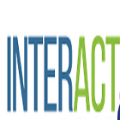Objective: Assess the feasibility of using ChatGPT or a similar AI-based chatbot for patient-provider communication. Participants: A US representative sample of 430 study participants aged 18 and above. 53.2% of respondents analyzed were women; their average age was 47.1. Exposure: Ten representative non-administrative patient-provider interactions were extracted from the EHR. Patients' questions were placed in ChatGPT with a request for the chatbot to respond using approximately the same word count as the human provider's response. In the survey, each patient's question was followed by a provider- or ChatGPT-generated response. Participants were informed that five responses were provider-generated and five were chatbot-generated. Participants were asked, and incentivized financially, to correctly identify the response source. Participants were also asked about their trust in chatbots' functions in patient-provider communication, using a Likert scale of 1-5. Results: The correct classification of responses ranged between 49.0% to 85.7% for different questions. On average, chatbot responses were correctly identified 65.5% of the time, and provider responses were correctly distinguished 65.1% of the time. On average, responses toward patients' trust in chatbots' functions were weakly positive (mean Likert score: 3.4), with lower trust as the health-related complexity of the task in questions increased. Conclusions: ChatGPT responses to patient questions were weakly distinguishable from provider responses. Laypeople appear to trust the use of chatbots to answer lower risk health questions.
翻译:目标:评估在患者-提供者交流中使用查特GPT或类似的AI型聊天室的可行性。参与者:美国代表抽样调查了430名年龄在18岁及以上的研究参与者。53.2%的受访者被分析为女性;平均年龄为47.1。 接触:从EHR中提取了10个具有代表性的非行政性病人-提供者互动。病人的问题被放在查特GPT,要求聊天室使用与人类提供者答复大致相同的字数来回应。在调查中,每个病人的问题都由提供者或查特GPT生成的答复。与会者被告知,5个答复是提供者生成的,5个答复是聊天室生成的。请与会者在财务上激励正确识别答复来源。还询问了他们对聊天室在病人-提供者交流中的功能的信任度,使用1-5的缩略图比例。结果:对各种问题的答复的正确分类为49.0%至85.7%不等。平均而言,聊天室的答复是正确的65.5%的时间,供应商的答复是对病人的低信任分数。




